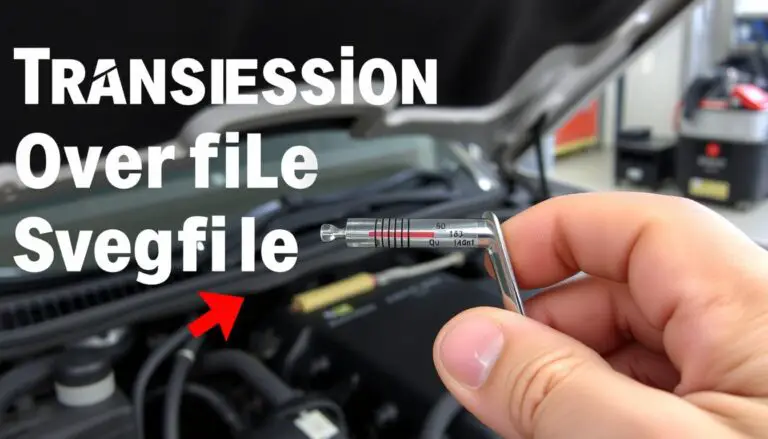Limit switches play a crucial role in industrial automation and control systems, enabling precise control over machinery and equipment.
These electro-mechanical devices detect the presence or absence of an object, or its position, and are widely used in various industries, including manufacturing, construction, and transportation.
The importance of limit switches lies in their ability to provide accurate and reliable control, enhancing safety and efficiency in industrial operations.
This article will delve into the types and working principles of limit switches, providing a comprehensive understanding of their applications and benefits in control systems.
Key Takeaways
- Understanding the role of limit switches in industrial automation.
- Exploring the different types of limit switches and their applications.
- Learning about the working principles of limit switches.
- Discovering the benefits of using limit switches in control systems.
- Recognizing the importance of limit switches in enhancing safety and efficiency.
What Are Limit Switches and Their Basic Function
Understanding limit switches is essential for grasping how control systems operate effectively in various industrial applications. Limit switches are integral to machinery control, serving as a crucial interface between mechanical movements and electrical control circuits.
Definition and Core Purpose in Control Systems
Limit switches are electromechanical devices designed to detect the presence or position of an object, thereby controlling machinery operations. Their core purpose in control systems is to provide a signal that corresponds to the physical position or presence of a component, ensuring that machinery operates within predetermined parameters.
Key Components and Construction
The construction of limit switches typically involves a mechanical actuator, electrical contacts, and a housing. The mechanical actuator is responsible for detecting the object’s presence, while the electrical contacts are used to generate the signal. The housing encloses these components, protecting them from environmental factors.
Operating Principles and Signal Generation
Limit switches operate on the principle of mechanical actuation, where the presence or position of an object triggers the switch. This actuation results in the generation of an electrical signal, which is then used to control machinery or indicate the status of a process. The signal generation is typically achieved through the opening or closing of electrical contacts.
In summary, limit switches are vital components in control systems, providing essential signals based on the physical presence or position of objects. Their construction and operating principles enable reliable operation in various industrial settings.
A Full Guide To Limit Switches: What They Are, Types, And Working
To fully appreciate the role of limit switches, it’s necessary to explore the various types available and their working principles. Limit switches are pivotal in control systems, serving as sensors that detect the presence or absence of an object or its position.

Mechanical Limit Switches
Mechanical limit switches are widely used due to their simplicity and reliability. They operate through physical contact, where a lever or plunger is actuated by an object, triggering an electrical signal.
Roller, Lever, and Plunger Types
Within mechanical limit switches, there are variations such as roller, lever, and plunger types, each suited for different applications. Roller types are often used in conveyor systems, while lever types offer flexibility in actuation.
Electronic and Solid-State Limit Switches
Electronic and solid-state limit switches represent a more modern approach, utilizing semiconductor technology to provide contactless operation. These switches are advantageous in environments where mechanical wear could be a concern.
Specialized Types: Hermetically Sealed and Explosion-Proof
Specialized limit switches, such as hermetically sealed and explosion-proof models, are designed for harsh environments. Hermetically sealed switches protect against corrosive substances, while explosion-proof switches are used in hazardous locations.
Comparison of Different Types and Selection Criteria
When selecting a limit switch, factors such as the operating environment, required precision, and durability must be considered. A comparison of mechanical, electronic, and specialized types will help determine the most suitable choice for a specific application.
The selection criteria should include assessing the switch’s actuation method, contact configuration, and compatibility with the control system.
How Limit Switches Work: Operating Principles
Understanding the operating principles of limit switches is crucial for their effective application in control systems. These devices play a vital role in detecting the presence or absence of an object, and their operation is based on a combination of mechanical and electrical components.
The mechanics of actuation and trigger points are fundamental to the operation of limit switches. When an object comes into contact with the actuator, it triggers a mechanical motion that either opens or closes the electrical contacts. This actuation mechanism is designed to be reliable and precise, ensuring consistent performance.
Mechanics of Actuation and Trigger Points
The actuation mechanism in limit switches is typically designed to be robust and resistant to wear and tear. The trigger point is the specific location at which the actuator engages or disengages, and it is critical for the accurate detection of objects or positions.

Contact Configurations: Normally Open vs. Normally Closed
Limit switches are available in different contact configurations, primarily normally open (NO) and normally closed (NC). The choice between these configurations depends on the specific application and the desired state of the circuit when the switch is actuated.
In a normally open configuration, the circuit is open until the switch is actuated, at which point it closes. Conversely, a normally closed configuration has a closed circuit that opens upon actuation.
Signal Processing in Control Circuits
The signal processing in control circuits involving limit switches is straightforward yet critical. When a limit switch is actuated, it sends a signal to the control circuit, which then interprets this signal to perform the desired action, such as starting or stopping a machine.
Response Times and Reliability Factors
Response times and reliability factors are crucial considerations for limit switches. The response time refers to how quickly the switch reacts to actuation, and reliability factors include the durability of the switch and its resistance to environmental factors.
Ensuring that limit switches have fast response times and are reliable is essential for maintaining the efficiency and safety of the systems they control.
Installation and Wiring Guide for Limit Switches
Proper installation of limit switches is crucial for their effective operation. Limit switches are critical components in control systems, and their correct installation ensures the reliability and safety of the overall system.
Step-by-Step Mounting Procedure
To mount a limit switch, first identify the correct location based on the application’s requirements. Ensure the switch is positioned to accurately detect the target object’s presence or absence. Use the provided mounting brackets or screws to secure the limit switch firmly in place.
Key steps include:
- Aligning the switch with the actuation point
- Securing the switch to prevent movement or vibration
- Verifying the switch’s operation after mounting
Wiring Diagrams and Connection Methods
Correct wiring is essential for the proper functioning of limit switches. Refer to the manufacturer’s wiring diagram to understand the specific connections required. Typically, limit switches have terminals for the common, normally open (NO), and normally closed (NC) contacts.
Connection methods may vary:
- Direct wiring to the control circuit
- Using connectors or junction boxes for complex systems
- Ensuring wire gauge is appropriate for the application’s current rating
Safety Precautions and Compliance Standards
When installing limit switches, it is crucial to follow safety guidelines to prevent accidents. Ensure that the installation complies with relevant standards such as UL (Underwriters Laboratories) or IEC (International Electrotechnical Commission) regulations.
Important safety considerations include:
- Avoiding electrical shock by ensuring power is off during installation
- Using protective enclosures for switches in hazardous environments
- Regularly inspecting the switch and its wiring for damage or wear
Applications and Industries Using Limit Switches
The versatility of limit switches makes them indispensable across multiple applications and industries. Their ability to detect and control mechanical motion makes them a crucial component in various sectors.
Manufacturing and Industrial Automation
In manufacturing and industrial automation, limit switches are used to control machinery and equipment. They are essential for detecting the presence or absence of objects, monitoring machine parts, and ensuring safety protocols are followed.
For instance, in conveyor belt systems, limit switches help manage the flow of materials by detecting the position of items on the belt, thereby preventing collisions and ensuring smooth operation.
Automotive and Transportation Systems
The automotive industry relies heavily on limit switches for various applications, including monitoring the position of vehicle parts such as doors, hoods, and trunks. They are also used in safety features like airbag deployment systems.
In transportation systems, limit switches are used to control and monitor the movement of trains and other vehicles, ensuring safe and efficient operation.
Home Appliances and Consumer Products
Home appliances and consumer products also benefit from the use of limit switches. For example, in washing machines, they detect the lid’s position, ensuring safety during operation. In microwave ovens, limit switches prevent the door from being opened during operation.
The following table summarizes the key applications of limit switches across different industries:
| Industry | Application | Function |
|---|---|---|
| Manufacturing | Conveyor belt systems | Detecting object presence and position |
| Automotive | Vehicle part monitoring | Monitoring door, hood, and trunk positions |
| Home Appliances | Washing machines and microwave ovens | Ensuring safety during operation |
Conclusion
Limit switches play a vital role in industrial automation and control systems, providing a reliable means of detecting and controlling the movement of machinery.
The various types of limit switches, including mechanical, electronic, and specialized types, offer a range of options for different applications and industries.
Understanding the operating principles, installation, and wiring of limit switches is essential for ensuring the safe and efficient operation of machinery and equipment.
As seen in various industries, including manufacturing, automotive, and home appliances, limit switches are a crucial component in control systems, enabling precise control and monitoring of machinery.
By selecting the right type of limit switch and following proper installation and maintenance procedures, industries can optimize their operations and improve overall productivity.
FAQ
What is a limit switch?
A limit switch is an electromechanical device that is used to detect the presence or absence of an object, or to determine its position, by means of a physical contact.
What are the different types of limit switches?
The main types of limit switches are mechanical, electronic, and solid-state limit switches. Specialized types include hermetically sealed and explosion-proof limit switches.
How do mechanical limit switches work?
Mechanical limit switches work by using a physical actuator, such as a lever or plunger, to trigger a switch contact when an object comes into contact with it.
What are the advantages of using limit switches in industrial automation?
Limit switches provide a reliable and accurate means of detecting object presence or position, allowing for precise control of machinery and equipment.
How do I select the right limit switch for my application?
To select the right limit switch, consider factors such as the type of actuator, switching function, environmental conditions, and compliance with relevant standards.
What are some common applications of limit switches?
Limit switches are used in a wide range of applications, including manufacturing and industrial automation, automotive and transportation systems, and home appliances and consumer products.
How do I install and wire a limit switch?
To install and wire a limit switch, follow a step-by-step mounting procedure, and refer to wiring diagrams and connection methods to ensure safe and effective installation.
What safety precautions should I take when working with limit switches?
When working with limit switches, ensure compliance with relevant safety standards, and take precautions such as proper wiring and installation to prevent electrical shock or other hazards.


